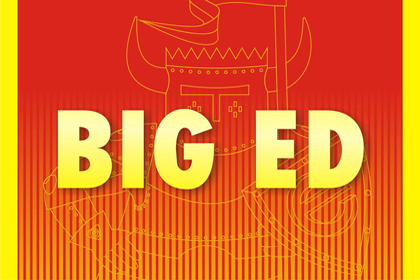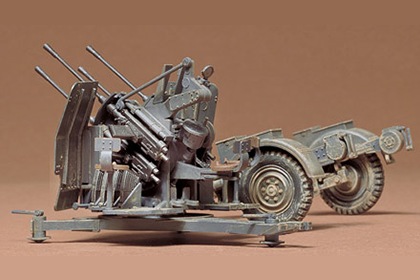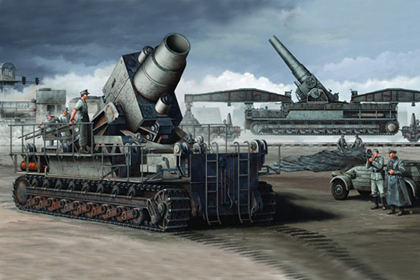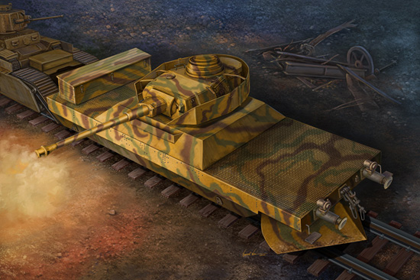
This is the Eduard, Big Ed (BIG 3510), photo etch set for the ‘German Panzerkampfwagen IV, Ausf. J‘ from Tamiya.
Detail set |
Tamiya |
||||
| (35 326) | Basic | ||||
| (35 547) | Zimmerit | 35 181 | |||
| (35 595) | Schürzen mesh | 35 181 | |||
| (XT 071) | Wheel mask | ||||
Source: Eduard
This is the Tamiya 35 181-3400 kit in 1/35 scale, of the ‘German Panzerkampfwagen IV, Ausf. J’.

The Panzerkampfwagen IV was Germany’s most important tank during the second world war. It remained in mass production throughout the conflict, with more than 8,000 units being produced. This represented more than one-third of Germany’s total wartime tank production. It was the backbone of the Panzer Divisions and it was often referred to as their “Workhorse” The Pz.Kpfw.IV underwent constant improvement throughout its long career.
As an example, its original short-barreled 7.5cm main gun was replaced with the long barreled 7.5cm KwK40 L/43 gun beginning with the Ausf. F2 version. The further improved 7.5cm KwK40 L/48 was added to the Ausf. H onwards.In 1944 however, with the introduction of the new Panther and Tiger tanks, plus other tactical considerations, the Pz.Kpfw.IV began to serve mainly in a defensive capacity. A need was required to simplify construction and increase productivity, plus conserve scarce raw materials.
The last of the series, the Ausf. J thus had a much simpler construction, and an extra fuel tank replaced the auxiliary engine/generator. This greatly increased its range from 210km to 320km and was welcomed by the German troops, as they were having difficult with their supply, but it was attained at the expense of electric power for the turret traversing motor. The thin steel plates known as Schurzen (skirts), first introduced with the Ausf. G, were sometimes replaced with heavy gauge wire mesh, or not even used at all.
This is the Tamiya 35 091-1000 kit in 1/35 scale, of the ‘German 20mm Flakvierling 38’.

Although its purpose was to provide aerial defense against Allied aircraft attack from a grounded position, it was also seen used with trucks and other land vehicles as well on warships.
This is the Trumpeter 01507 kit in 1/35 scale, of the ‘German Sd.Kfz.7 KM m 11 Mittlere Zugkraftwagen 8t – Late version’.

Starting in 1943, an armor radiator shield and crew cab were introduced as protection against shell fragments and small-arms fire.
Production of the Sd.Kfz.7/2 began in 1942, and continued to the end of the war, with about 1000 produced by the end of January 1945. Initially, there were nine Sd.Kfz.7/2 in each FlaK-Kompanie or Batterie; increased to 12 in October 1943.
This is the Tamiya 35 099-2500 kit in 1/35 scale, of the ‘German Flakpanzer Gepard’.

The Oerlikon, which was chosen for production, became the Flakpanzer Gepard, which was essentially a standard Leopard with the ordinary turret replaced by the Oerlikon-Contraves twin 35/90mm AA turret and associated auxiliary equipment.
This is the Trumpeter 00208 kit in 1/35 scale, of the ‘German Mörser Karl-Gerat 040/041 on railway transport carrier – Initial version’.

At a conference with Hitler in March 1943, it was stated that the first 54cm Gerät 041 would be delivered by June 1943, and the third, by mid-August. The 60cm and 54cm barrels appear to have been interchanged as required. In 1945, US forces captured vehicle II with a 60cm, and vehicle V with a 54cm. The prototype chassis, built in 1939, had eight road wheels with external swing arms. Production Karl had eleven road wheels.
Ammunition was transported in a tracked Munitionsschlepper converted from the PzKpfw IV, four rounds in each Schlepper. For the 60cm Gerät 040, the s Be Granate weighed 2.117 tons and the Ie Be Granate, 1.70 tons; in this case of the 54cm Gerät 041, 1.58 tons and 1.25 tons respectively. Maximum rate of the fire was 6 rph (rounds per hour). Guns I-IV went to the Russian Front in July 1941 with the 628th schwere Artillerie Abteilung. They saw action at various sites, including Lemburg in that year.
The best known action was against Sevastopol in 1942. Later, four guns were issued to the 833rd schwere Artillerie Abteilung (mot). These guns had the names Adam, Eve (1st Batt.) and Thor, Odin (2nd Batt.) The names for guns V and VI were Loki and Ziu.
This is the Trumpeter 00366 kit in 1/35 scale, of the ‘German Panzerkampfwagen, KV-1 756(r)’.

Form the KV-1 shown at the bottom of the lefthand page there arose this KV-1 with a German 7.5cm L/43 cannon and German commander’s cupola. The armour was sprayed with German camouflage paint.
This is the Trumpeter 00369 kit in 1/35 scale, of the ‘German Panzerjägerwagen, volume 2’.

It was the armored pursuit car replace by the earlier pusher car. That now gave the train an effective means of against Russian tanks. In this instance, a program of new construction had been planned in 1944 by German Army: 8 BP 44 armored trains.
This is the Trumpeter 00386 kit in 1/35 scale, of the ‘German Panzerjägerwagen, volume 1’.

It was the armored pursuit car replace by the earlier pusher car. That now gave the train an effective means of against Russian tanks. In this instance, a program of new construction had been planned in 1944 by German Army: 8 BP 44 armored trains.
This is the Tamiya, 35 197-2600 kit in 1/35 scale, of the ‘German Sturmgeschütz III, Ausf. G – Early version’.

As it was mainly intended for close fire support for the Wehrmacht, it was used as self-propelled artillery against the opposing enemy’s strategic points. However, when the German forces encountered the Russian KV and T-34 tanks on the Eastern front, the situation abruptly changed. To cope with this Russian tank threat, the Germans were forced to upgrade their existing weapons systems. The G-type StuG III built from late 1942 onwards, used a more powerful, long barrel 75mm L/48 gun. The early G-type had a square shaped gun mantlet.
The superstructure was redesigned and an MG42 machine gun with shield, commander’s vision cupola and smoke dischargers were added. The thin steel plates, known as Schurzen (skirts) were attached to the sides of the hull beginning in the spring of 1943. The type-42 assault gun mounted a 105mm howitzer on the StugG III chassis and was developed to fulfill the StuG III’s original role of infantry support. Incorporating several minor changes, about 7,800 G-type StuG III’s were produced.